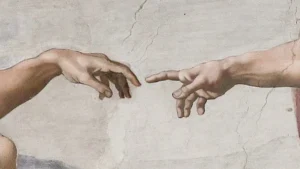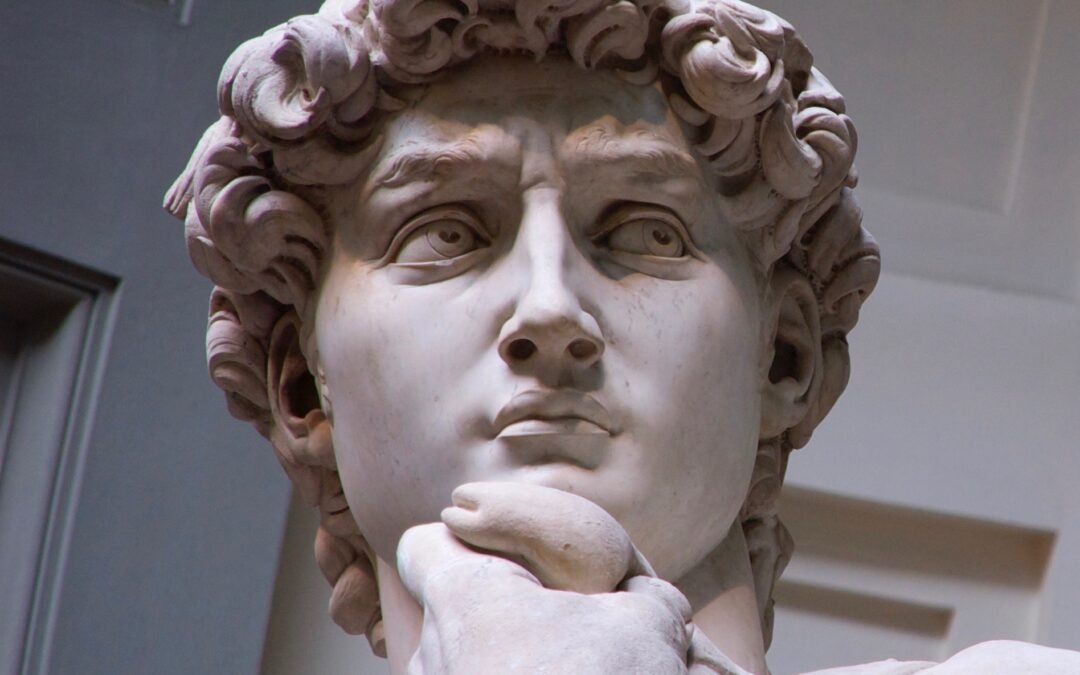Few names in the history of art carry as much weight as Michelangelo Buonarroti. Revered as one of the greatest artists of all time, Michelangelo’s life and work epitomize the essence of the Italian Renaissance—a period that celebrated humanism, innovation, and the rebirth of classical ideals. His genius transcended disciplines, as he mastered sculpture, painting, architecture, and even poetry. More than five centuries later, his works continue to inspire awe, proving that true artistry defies the limits of time.
Early Life: From Stone to Glory
Michelangelo di Lodovico Buonarroti Simoni was born on March 6, 1475, in the small town of Caprese, Tuscany, into a family of modest nobility. His father initially opposed his artistic ambitions, hoping he would pursue a more “respectable” profession. But Michelangelo’s passion for art was undeniable. At the age of thirteen, he began an apprenticeship with the renowned painter Domenico Ghirlandaio in Florence—a city that was then the cultural heart of the Renaissance.
Soon, Michelangelo’s talent for sculpture outshone his peers. Encouraged by Lorenzo de’ Medici, the powerful patron of the arts, Michelangelo studied classical sculptures in the Medici gardens, laying the foundation for his unparalleled understanding of human anatomy and form.
Michelangelo’s extraordinary talent soon sparked tension with his master. While most apprentices were expected to copy their teacher’s works, Michelangelo’s drawings surpassed Ghirlandaio’s own compositions. This caused friction in the workshop, and stories suggest that Michelangelo was accused of showing off and even correcting the teacher’s work—a daring move for a teenager. This early conflict foreshadowed Michelangelo’s lifelong perfectionism and pride, traits that would both elevate and complicate his career.
The Sculptor of Souls
Michelangelo’s first love was sculpture. For him, marble was not just stone; it was a living entity waiting to be liberated by his chisel. His sculptures conveyed raw emotion and divine beauty, merging physical perfection with spiritual depth.
The Pietà (1499)
One of his earliest masterpieces, The Pietà, is a marble sculpture housed in St. Peter’s Basilica, Vatican City. Depicting the Virgin Mary cradling the lifeless body of Jesus, this work stunned contemporaries for its tender emotion and flawless execution. Michelangelo was only 24 years old when he completed it—a fact that astonishes even today.
David (1501–1504)
If one artwork symbolizes Michelangelo’s genius, it is the monumental David. Standing 17 feet tall, this marble statue represents the biblical hero poised before his battle with Goliath. Unlike previous depictions, Michelangelo portrayed David before the fight, capturing a sense of focused determination rather than triumphant victory. Today, the statue resides in the Galleria dell’Accademia in Florence and is considered the epitome of Renaissance ideals: human strength, beauty, and intellect
Moses (1513–1515)
Commissioned for Pope Julius II’s tomb, Moses is another awe-inspiring creation. The sculpture’s dynamic pose, muscular detail, and penetrating gaze exemplify Michelangelo’s ability to infuse stone with vitality. The subtle veins on Moses’ arms and the tension in his body suggest motion and life—a hallmark of Michelangelo’s style.
The Master of Frescoes
While Michelangelo often described painting as a lesser art compared to sculpture, fate had other plans. Pope Julius II, impressed by Michelangelo’s talent, commissioned him to paint the ceiling of the Sistine Chapel—a project that would redefine Western art.
The Sistine Chapel Ceiling (1508–1512)
This monumental work spans over 5,000 square feet and includes over 300 figures. The frescoes narrate scenes from the Book of Genesis, including the iconic Creation of Adam, where the fingers of God and Adam nearly touch—a symbol of divine spark and human potential. The ceiling’s grandeur, complexity, and anatomical precision showcase Michelangelo’s unparalleled vision and technical mastery.
The Last Judgment (1536–1541)
Decades later, Michelangelo returned to the Sistine Chapel to paint The Last Judgment on the altar wall. This dramatic scene, filled with muscular, twisting figures, portrays the moment of divine judgment with raw intensity. While controversial in its time for its nudity and emotional power, the fresco remains a towering achievement of Renaissance art.
Architectural Brilliance
Michelangelo’s genius extended beyond painting and sculpture to architecture. His most significant contribution was the design of the dome of St. Peter’s Basilica in the Vatican. This engineering marvel, completed after his death, became a symbol of both the Catholic Church and Renaissance innovation.
A Poet’s Heart
Few know that Michelangelo was also a gifted poet. His sonnets and madrigals reveal a deeply reflective soul grappling with themes of love, mortality, and spirituality. His writings complement his visual art, offering a glimpse into the mind of a man torn between earthly passions and divine aspirations.
Legacy: The Divine Michelangelo
Michelangelo passed away on February 18, 1564, at the age of 88. His contemporaries called him Il Divino—“The Divine One”—a title befitting his extraordinary talent. His works shaped the trajectory of Western art and inspired countless generations of artists, from Raphael to Rodin.

What makes Michelangelo timeless is not just his technical brilliance but his ability to express the full range of human experience—strength and vulnerability, faith and doubt, beauty and imperfection. He turned marble and pigment into living forms that continue to speak to us across centuries.
Famous Works by Michelangelo
Sculptures: Pietà, David, Moses, The Dying Slave, The Rebellious Slave
Paintings: Sistine Chapel Ceiling (Creation of Adam), The Last Judgment
Architecture: Dome of St. Peter’s Basilica, Laurentian Library
Poetry: Sonnets and madrigals reflecting his inner world
In today’s fast-paced digital age, Michelangelo’s dedication, vision, and relentless pursuit of perfection offer a timeless lesson: true artistry demands patience, passion, and an unyielding belief in the power of human creativity.
His life story is not just about art; it’s about the limitless potential of the human spirit.
Michelangelo was more than an artist; he was a force of nature—a man driven by an insatiable need to create, even in the face of conflict, scandal, and personal struggle. His story reminds us that greatness often walks hand in hand with controversy, and true genius cannot be confined by convention.
